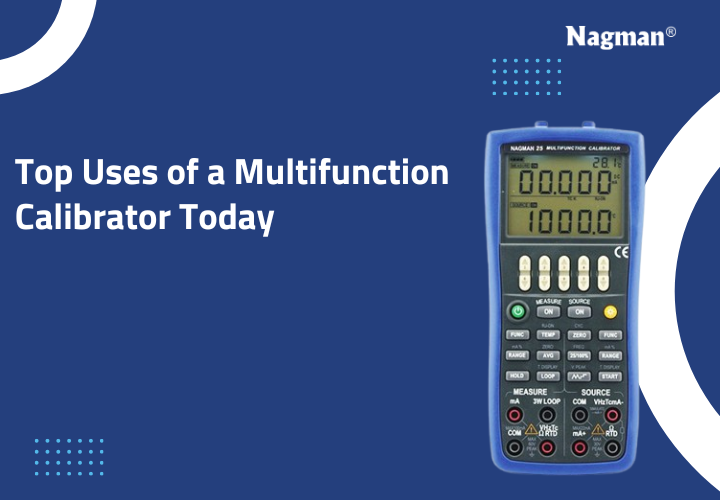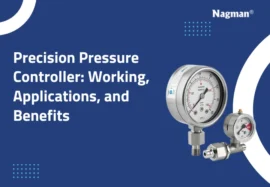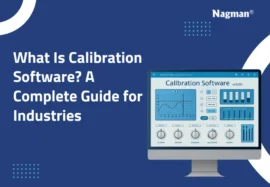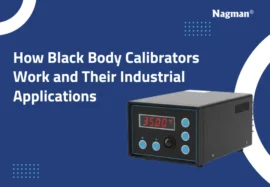Introduction
In fast-moving industries, everything is about accuracy and speed. We could be in a laboratory, manufacturing plant, or field service, where we understand the importance of the right tools. A multifunction calibrator is such an essential tool. With a profuse application of automation and digital systems, these devices have become indispensable in calibration and testing. In this blog, we analyse what a multifunction calibrator is, where it finds application, and what one should consider when buying the perfect one.
What Is a Multifunction Calibrator
A multifunction calibrator is an instrument for testing and adjusting equipment and sensors of many types. It handles simulation and measurement of signals such as voltage, current, resistance, frequency, pressure, and temperature. As a single-instrument solution to the problem of multiple needs, this device earns its keep in situations that badly need flexibility and precision.
Common Industrial Uses for Calibrators
Measurement and calibration are two of the many processes in the oil and gas, electrical generation, chemical, and manufacturing industries. A multifunction calibrator ensures that technicians and engineers accurately calibrate the instrument controls of significant processes. Calibration must keep all measurements within standard limits, from pressure gauges to flow meters. Regular calibration thus avoids early damage and diminishes equipment downtime.
Multifunction Calibrator in Process Control
Where processes control industries, uncertainties in measurements directly influence product uncertainty in quality and safety. Here, a multifunction calibrator is used to calibrate process instruments like transmitters, controllers, and recorders. This calibration ensures that the data monitored is correct and used for the decision-making process. The professional even uses advanced calibration software to schedule automatic checks, store calibration records, and produce compliance reports.
Testing and Calibration in Fieldwork
Field engineers or maintenance teams require portable and reliable tools. The multifunction calibrator meets such requirements under testing and calibration conditions. This makes technicians carry out tests and calibrations on-site without having to go back to the laboratory, thus saving time and money. When used with calibration software, field data can be uploaded and analysed within minutes, thereby improving workflow and accuracy.
Use in Temperature Sensor Calibration
Temperature sensors are used for temperature applications in different fields. These calibrators are capable of generating or measuring signals from sensors, thereby making them suitable for temperature calibration. Calibrations require sensors to provide accurate readings, so factors such as temperature influence food processing, pharmacy, and heating systems.
Pressure Transmitter and Loop Testing
Pressure transmitters are essential for safety and quality considerations in almost every industry. A multifunction calibrator assists in testing the transmitters by simulating pressure signals and checking output values. It also offers loop testing, which verifies the whole signal path from sensor to control system. This type of testing ensures that the entire system is functioning correctly and not the individual parts.
Selecting the Right Calibrator Model
When choosing a multifunction calibrator, consider specific applications. Important elements like signal types, required accuracy, environmental conditions, and portability make a difference. A handheld, battery-operated model might work best if your site requires abundant fieldwork. However, when it comes to lab testing, a bench-top model with better accuracy is more suitable.
Key Features to Look For
A good multifunction calibrator should be:
- Easy to use with a clear and straightforward interface
- Compatible with multiple types of signals
- Rugged and portable enough for field use
- May interface with calibration software for data storage and entering reports
- Should simulate and source various electrical, temperature, and pressure inputs
Some models might even have automated calibration procedures that reduce human error and save time.
Conclusion
A multifunction calibrator is more than just a measuring tool; it is the complete solution to modern calibration needs. It supports field technicians and lab engineers alike with an array of tasks at great speed and with great precision. Smart calibration software changes how industries maintain accuracy and compliance when combined with a multifunction calibrator. Apart from having an impact on performance, selecting the right calibrator also contributes to ensuring the safety, reliability, and efficiency of an operation.






